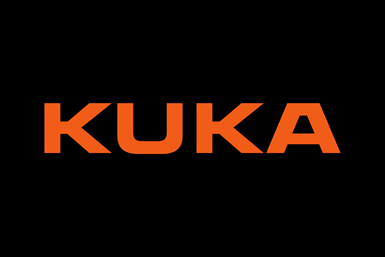KUKA Enhances Modular Digital Simulation Software
KUKA.Sim 4.0 software is designed to enable manufacturers to test and validate robotic installations before equipment arrives, minimize the footprint of cells with 3D visualization of safety spaces, then transfer applications with 100% accuracy to an actual robot controller.
Share






Hwacheon Machinery America, Inc.
Featured Content
View More



Takumi USA
Featured Content
View More.png;maxWidth=45)
DMG MORI - Cincinnati
Featured Content
View MoreKUKA Robotics has launched KUKA.Sim 4.0, an enhancement of its modular digital simulation software package. KUKA says this latest version facilitates accurate planning, programming, safety configuration and more through digital twins of the automation processes.
According to the company, the KUKA.Sim software enables manufacturers to test and validate robotic installations before equipment arrives, minimize the footprint of cells with 3D visualization of safety spaces, then transfer applications with 100% accuracy to an actual robot controller. In addition, KUKA.Sim 4.0 can program robots offline, analyze cycle times and expand through add-on modules.
KUKA.Sim 4.0 is designed to check reach ability and detect collisions in virtual space to support easy implementation and minimize planning time and downtime. Through a digital twin that matches the physical process, 3D simulation covers the planning process from design and verification through programmable logic controller (PLC) code. For system integrators, the KUKA.Sim 4.0 is meant to provide solutions that translate directly to customers' production lines.
KUKA.Sim 4.0’s KUKA Robot Language (KRL) editor includes expert and beginner onscreen views with a visual program tree designed to support users of all skill levels, including those without previous KRL experience. Drag and drop configuration of a library of smart components is meant to enable quick investigation of design ideas with accurate calculation of cycle times. Export options include 3D PDF files, 2D mechanical commissioning data and presentation/simulation results for use on VR hardware or the Mobile Viewer app for smartphones and tablets.
In addition, modular add-ons offer flexibility. The Modeling add-on is designed to enable users to build a customized library based on the CAD data from the kinematic systems, sensors, material flow and physical behavior of their own robotic installations. The Connectivity add-on commissions robot cells virtually for planning and implementation. The Arc Welding add-on defines robot approach positions and optimal orientations to speed up offline programming.
Related Content
-
Can AI Replace Programmers? Writers Face a Similar Question
The answer is the same in both cases. Artificial intelligence performs sophisticated tasks, but falls short of delivering on the fullness of what the work entails.
-
Automated CAM Programming – Is Your Software Really Delivering?
A look at the latest automation tools in Autodesk Fusion 360 software and how forward-thinking machine shops and manufacturing departments are using them to slash delivery times and win more business.
-
How this Job Shop Grew Capacity Without Expanding Footprint
This shop relies on digital solutions to grow their manufacturing business. With this approach, W.A. Pfeiffer has achieved seamless end-to-end connectivity, shorter lead times and increased throughput.





































